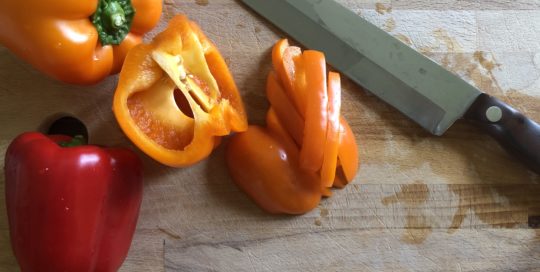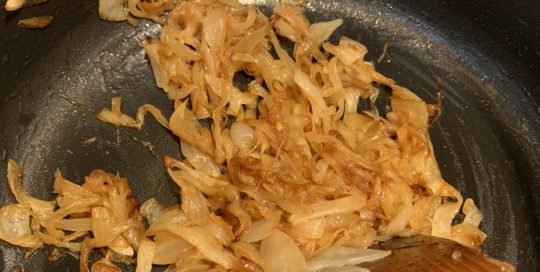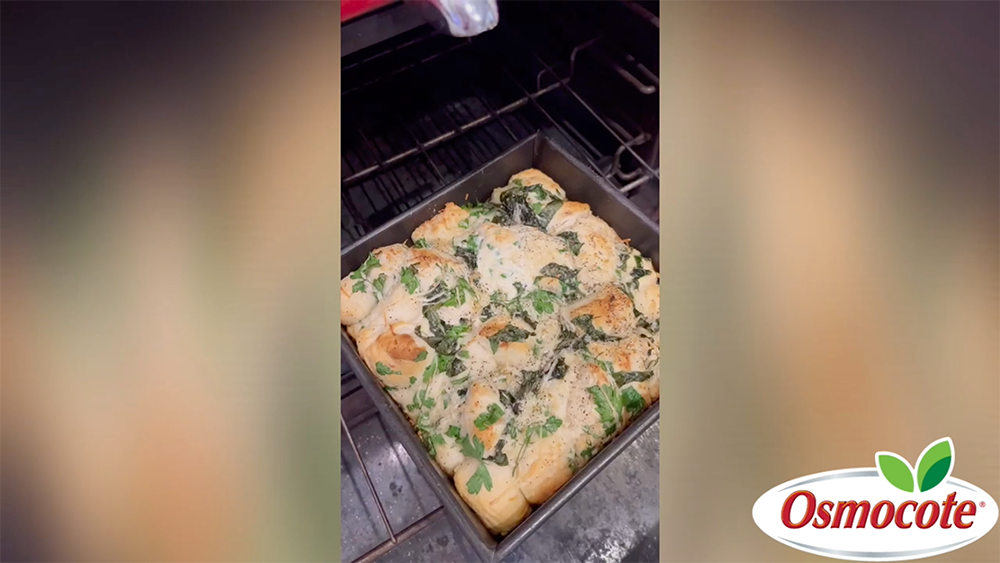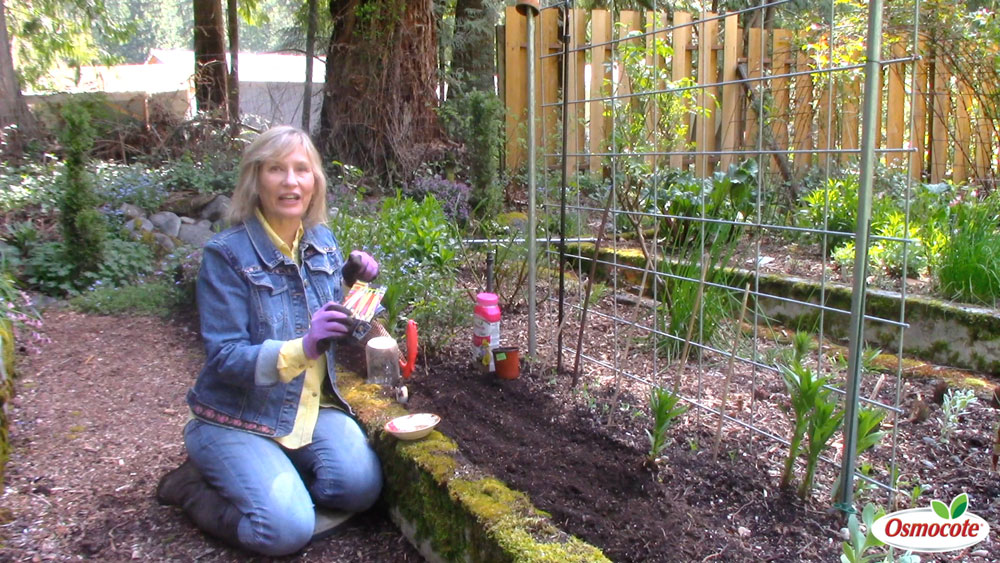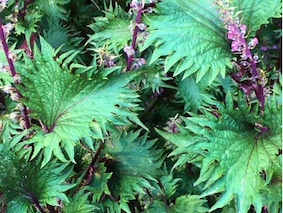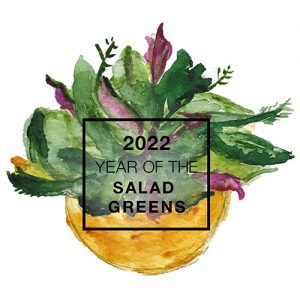Aromatic vegetables are an essential part of good cooking. They include onions, carrots, celery, garlic, leeks, parsnips, tomatoes, mushrooms, shallots, peppers and ginger.
In our Midwestern garden, there are three vegetables—onions, carrots and celery—that form the basis of my soups and stews. In France, the name for this trio is mirepoix (pronounced meer-pwah).
The basic mirepoix formula is 2 parts onion, 1 part celery and 1 part carrot. For example, use 8 ounces of onion, 4 ounces of celery and 4 ounces of carrot. That one-pound mixture of mirepoix can flavor a gallon of stock, soup, or it can be used in stews, braises or marinades. Using home-grown aromatic vegetables gives soup a lovely, fresh flavor. All three edibles are easy to grow in many parts of the county.
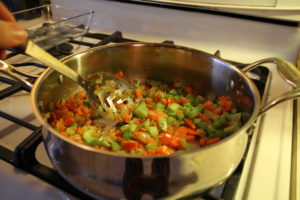
Mirepoix: the French name for the trio of carrots, onions, and celery
Onions
For the aromatic vegetables for mirepoix, I grow onions, such as the sweet, white Super Star, an All-America Selections winner, and Walla Walla Sweet, both of which produce nice size bulbs. Sow onion seeds in April or May, or as soon as your soil can be prepared in early spring. Onion seeds begin germinating when the top inch of soil reaches 45 degrees Fahrenheit. (One of my favorite tools is an inexpensive soil thermometer. You can find them online.) Choose a spot with full sun and well-drained fertile soil.
You can also plant onions from transplants or from dried “sets.” Transplants are field-grown onions that are dug up in spring while they’re dormant. They are sold in bundles in garden centers and online and can be transplanted into home gardens. Onion sets are dried bulbs, which are also sold in spring. Depending on the variety, bulbing onions may need between 90 and 125 days before they’re ready to harvest.
Onions form bulbs in response to the length of daylight during summer. Short-day onions, which grow in the South, need about 10 hours of daylight. Some popular short-day varieties include Red Coach, Georgia Sweet and White Castle. In the North, choose “long-day” varieties, which need 14 to 15 hours of daylight to produce bulbs. Examples of long-day onions include Walla Walla Sweet, White Sweet Spanish and Yellow Sweet Spanish. Day-neutral or “intermediate day” onions such as Candy Onion and Super Star will form bulbs with 12 to 14 hours of daylight and they should produce well in many regions.
Harvest onions when they begin to develop papery skins and the leaves dry and begin to fall over. Dig the bulbs out of the ground taking care not to injure them and let them “cure” in the sun (on the ground) before removing the dried tops and storing them indoors.
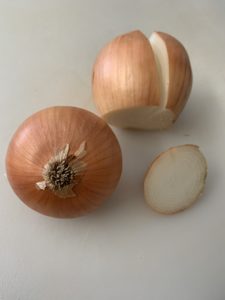
Carrots
Round and thumb-shaped carrots are favorites among many home gardeners because they can be grown in pots and raised beds. To get a really long, straight carrot, you need a deep, loose and fertile sandy loam. If you can’t provide that type of soil, you’ll end up with malformed or cracked carrots.
Because our Midwestern soil tends to be heavy with clay, I dig in compost, remove any small stones or rocks and rake the soil until it’s smooth and free of clumps. I also grow several short and round varieties. Some of our favorites include Thumbelina, Early Nantes and Chantenay. While we like the golf-ball sized Thumbelina for snacking, medium-length carrots like Nantes work well for mirepoix. If you have heavy or shallow soil, try a chantenay-type, such as Caracas, which forms a mere 4-inch-long root. Another favorite is Danvers Half Long, an heirloom carrot that grows about 6 to 8 inches long and is ready to harvest in 70 days.
Carrots like cool weather and the seeds start germinating when the soil temperature is about 41 degrees Fahrenheit. Sow seeds outdoors about 1/4-1/2” deep in rows that are about 12 inches apart. Sprinkle the soil surface to keep it moist. Germination can take one to three weeks so be patient. Harvest carrots after they turn a bright orange. If you harvest them too early, the sugar content won’t have reached its peak and the carrots may taste bitter or soapy.
I sow carrot seeds about every three weeks for a continued harvest in spring and summer. Some varieties can be harvested as baby carrots in as little as 36 days. But for mirepoix, I usually wait until they’re fully grown, which is closer to 60 or 70 days depending on the variety.
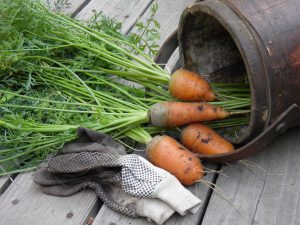
Celery
Don’t overlook celery when planning what aromatic vegetables to plant this spring. Celery can be grown in much of the country, preferably during a cool, moist season. If your are a novice gardener, it’s easier to start off with small celery plants (transplants) from your local garden center. If you want to grow celery from seed, sow the seeds indoors about 8 weeks before the last spring frost date in your area. (Find the last spring frost date for your region here.)
I usually buy celery transplants to get a head start. Depending on the variety, celery can be ready for picking in as little as 80 days (try Conquistador or Tango). An heirloom, Tall Utah 52, is ready to harvest in 90 to 100 days. Late-spring plantings that mature in early autumn often give the best results.
Grow celery in rich soil and provide water, especially during hot, dry weather. Without adequate water, celery stalks will be dry, small and tough. I start harvesting individual stalks from the outside of the plants when they are about 8 inches tall.
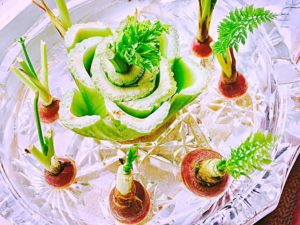
Using Homegrown Mirepoix
When I’m making a mirepoix for stock that will simmer less than an hour, I slice the aromatic vegetables very thin or in 1/2-inch dice. When they finish cooking in the pan, I’ll add a gallon of water and simmer it as a vegetable stock for about one hour. The shorter the simmering time, the smaller and thinner the cut; the longer the time, the larger and thicker the cut.
Put enough fat or oil in a pan to coat the bottom. Cook the onions first over medium heat and stir so they don’t stick. Once the onions begin to soften, add the carrots, cooking for another five minutes or so to soften them. The vegetables become tender when they start to “sweat” (give off juices.) When the onions and carrots turn lightly brown, add the celery.
You can cook the mixture longer on lower heat to caramelize the vegetables, which brings out their sweetness. For added flavor and color, add a small can (2 ounces) of tomato paste after the celery softens. Cook the mixture until it turns a deep brown and then add it to your gallon of stock water, a stew or other dish. Fresh from your garden. Enjoy.
Some seed sources:
Dixondale Farms (onions), 830-876-2430
Johnny’s Selected Seeds, 877-564-6697
John Scheepers Kitchen Garden Seeds, 860-567-6086
Renee’s Garden, 888-880-7228
Territorial Seed Co., 800-626-0866
The Cook’s Garden, 800-457-9703
Seed Savers Exchange, 563-382-5990
Baker Creek Rare Seeds, 417-924-8917

